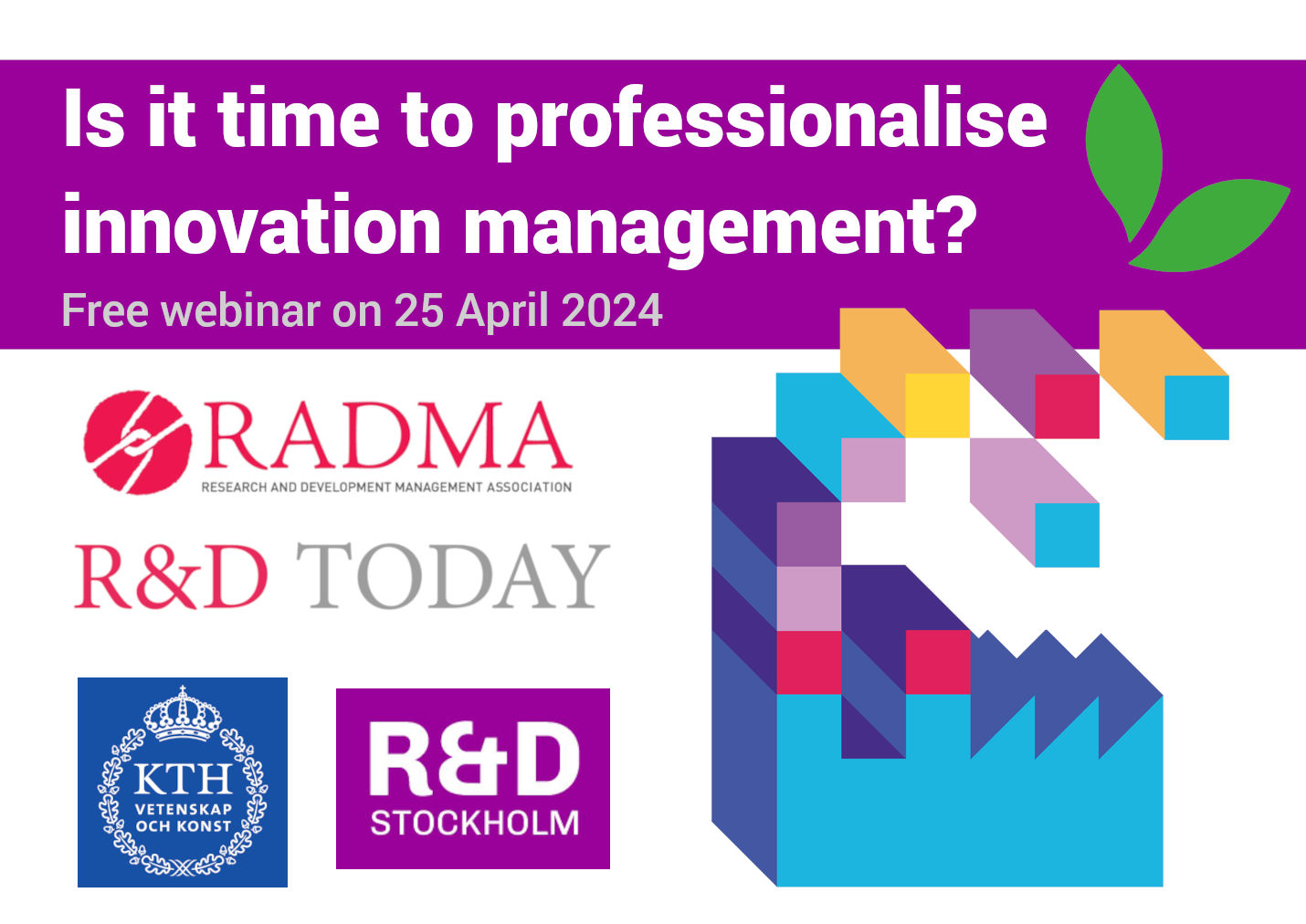The Innovation Manager job description has been captured by the Swedish organisation Innovationsledarna and it has produced this useful document to help both organisations and individuals define the role.
The innovation management professional job role is broad. It encompasses both strategic and operational elements. These elements can be combined into a single role, or divided into separate roles. This document is meant to be used as a guide to assembling one’s own job description or to create a new role, which depends on the specific needs, means and requirements of the organization.
Job titles: Innovation Leader, Innovation Manager, Innovation Driver, Innovation Champion, Innovation Coach, Innovation Strategist, Chief Innovation Officer (CInO) There are many different titles for this position.
Reports to CEO, Director-general, top-management team or a senior operational or functional manager/leader
Purpose of the job
The purpose of the job role is to be responsible for, and actively contribute to, leading and organizing innovation efforts and promoting conditions and capabilities in support of innovation, in all kinds of organizations – private or public, large or small, in all sectors, areas and functions.
Innovation is introducing change in order to create value for the organization and its stakeholders. This change can encompass new or improved products or services, the way offerings are created or delivered (process innovation), the structure, routines and methods of the organization (organizational innovation) as well as changes to operational and business models. The degree of change can range from small improvements (incremental innovation) to large fundamental changes (radical/disruptive innovation).
Areas of responsibility and activities
1. To lead development and continuous update of the organization’s innovation vision and strategy in coordination with key stakeholders
- Initiate relevant market monitoring and foresighting activities, including search for new market opportunities, user needs
- Align and integrate the innovation strategy with strategic objectives of the organization, including operational and business models, and road maps for products and services
- Define and assess key organizational prerequisites (structure, staffing, etc) for implementing the innovation strategy
- Build and maintain a strategic programme for implementing the innovation strategy and ensure that the resources (people and facilities) needed to deliver the innovation objectives are present
- Maintain an innovation portfolio (consisting of e.g. innovation- or new business development projects)
- Develop alternative business models conducive to innovation
2. To lead development and the continuous update of the organization’s innovation process(es) in coordination with key stakeholders
- Develop appropriate metrics to measure the effectiveness (e.g., number of new or improved offerings) and efficiency (e.g., throughput time) of the innovation process
- Develop innovation process documentation and implement staff training programmes
3. To lead development and the continuous maintenance of an inventory of innovation methods and tools, including idea management systems, idea generation methods, staff training programmes, and internal networking initiatives
- Provide consultation on innovation tools when needed
- Convene workshops with clearly defined innovation themes
- Structure and implement staff training programmes
- Implement and support an organization-wide idea management system, including the gathering, evaluation, selection and implementation of employee’s ideas
4. To plan, execute/coach and follow-up innovation initiatives/projects to search for new opportunities, or to strengthen of existing operations and/or business
- Define project outline (e.g., objectives, goals, scope, activities, duration, participants, budget, expected results) and inform and engage internal and external participants (employees, customers, users, suppliers or other stakeholders)
- Analyse current market situation, challenges and potential opportunities
- Convene workshops with engaged stakeholders
- Clarify customer/user values and insights and create/describe scenarios for the future
- Cluster ideas into concepts
- Develop and verify prototypes (e.g., illustrations, mock-ups, wire-frame models)
- Build cases around concepts and manage a portfolio of concepts
- Present concepts to management and suggest future actions
5. To establish relationships with external stakeholders and potential partners within the academia, government, industry and other relevant organizations
- Participate in external networking activities
- Convene themed workshops with external stakeholders or partners
6. To promote an innovation friendly organizational culture supporting experimentation, open communication, empowerment, autonomy and a tolerance for failure
- Conduct measurements of organizational innovation culture
- Structure and implement leadership training programmes
- Assess and restructure the organization’s employee incentive structure / reward system
- Assess and remove factors that may hinder employee’s job autonomy (e.g., timedraining activities, unnecessary administration, reporting-structures)
- Establish relationships and networks with internal stakeholders

Is Innovation Management a profession?
If you want to know more about this subject our online webinar “Is it time to professionalise Innovation Management” is available here.
You can listen to the full discussion via a podcast on Soundcloud, and watch the presentations from our two speakers:
Prof Magnus Karlsson, KTH Royal Institute of Technology
Scott May, Head of MISTA at Givaudan

